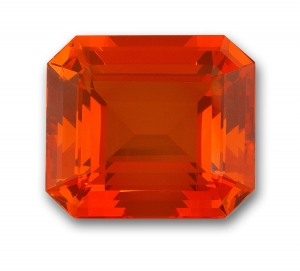 Clarity refers to the purity of a gemstone. In gemological parlance, clarity grades are based on the evaluation of the internal and external characteristics of a gemstone. These characteristics are called inclusions if they are inside the gemstone and blemishes if they are on the surface of the gemstone. In many cases, few inclusions will mean little interruption in the path of light through a gemstone, resulting in superior performance. Some internal inclusions may reach the surface of the gemstone. Inclusions occur in three states and can be solid, liquid, or gaseous, with the latter occurring rarely. Here you will learn about the different types of common gemstone inclusions and how they impact the value of a gemstone. Inclusions can also be very desirable in certain types of gems. Learn what to look for inside the fascinating crystal structure of a gemstone and how some inclusions can even point to the geographical origin of an individual gemstone.
Clarity refers to the purity of a gemstone. In gemological parlance, clarity grades are based on the evaluation of the internal and external characteristics of a gemstone. These characteristics are called inclusions if they are inside the gemstone and blemishes if they are on the surface of the gemstone. In many cases, few inclusions will mean little interruption in the path of light through a gemstone, resulting in superior performance. Some internal inclusions may reach the surface of the gemstone. Inclusions occur in three states and can be solid, liquid, or gaseous, with the latter occurring rarely. Here you will learn about the different types of common gemstone inclusions and how they impact the value of a gemstone. Inclusions can also be very desirable in certain types of gems. Learn what to look for inside the fascinating crystal structure of a gemstone and how some inclusions can even point to the geographical origin of an individual gemstone.
Inside a Microscopic World
In describing gemstone clarity, an experienced stone grader will use certain criteria when making a determination. Those criteria are the size, number, nature, location, and visibility of the inclusions or blemishes that a gemstone may possess. Inclusions give gemstones a distinct personality and a singular appearance. They are often inherent to the gemstone but may also be caused during or after cutting and polishing by damage. Gemstone inclusions, however, are not synonymous with damage. Naturally occurring inclusions can be quite beautiful. In many varieties of gemstone, a higher clarity grade will equate with a higher value. Yet, gemstones with natural inclusions can enchant just the same and often prove more affordable.
A Beautiful Garden
Emeralds are precious gemstones that are extremely difficult next to impossible to find without internal inclusions. The crystal structure of beryl, which is the mineral composition of emerald, can have numerous feathers which appear as cloudy lines or cracks. The pattern of inclusions in emeralds is sometimes referred to as jardins, French for “gardens.” In diamonds, an internal crystal is often called a piqué. Liquid inclusions in opals create spectacular iridescence and are perhaps some of the best known of the desirable inclusions. Other desirable inclusions are the rutile needles in rutilated quartz which can create the appearance of dramatic intersecting lines and the iron oxides present in moss agate which often appear as an intriguing forest. Pyrite inclusions in lapis lazuli create reflective gold patterns across the opaque blue gemstone. These are fine examples of desirable inclusions in gemstones.
A Discerning Eye
The best way to understand the nature of inclusions and how they affect gemstone clarity is to use the same tool that professional gemologists use for grading- a 10X loupe. Hold the loupe with the thumb and forefinger of your left hand directly in front of your eye, and with your right hand, use a pair of gemstone tweezers to bring the stone into focus. Some of the characteristics you may observe include pinpoints, which appear as tiny dots, clouds, which look like a milky or hazy area, and feathers, which appears as faint or milky lines inside the gemstone. Although there are numerous different types of inclusions, these are a few of the more common that you are likely to see.
Blemishes will also impact clarity. Common blemishes are nicks and chips, usually located on the girdle of the gemstone, scratches, which appear as faint lines with no apparent depth on the surface of the gem, and polish lines, which are remnants from the polishing process and look like streaks.
Clarity and Value
Gemstones that posses a high clarity grade will be more valuable than a gemstone of equal carat weight and color saturation due to the fact that purer gems are rarer and will therefore command a higher price. Clarity grading scales determined by leading gemological laboratories have achieved much in the way of standardizing the way vendors represent clarity. A gemological report will contain a clarity grade of a gemstone and may even note the country of origin. This is because gemstones mined from a certain regions will often share clarity characteristics. A good example is rubies from the Mogok region of Myanmar (one of two major sources of ruby in the world) most often show internal rutile inclusions, known as silks for their threadlike appearance. Creators of synthetic gemstones will often add small metallic inclusions so that the final products can be identified properly as manmade gemstones.
Do you have questions about gemstone clarity? Would you consider buying a gemstone with inclusions? Post your questions about gemstone clarity and we will give you expert information.
Read other posts from the Introduction to Gemstones series.
